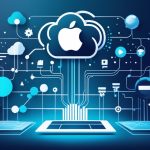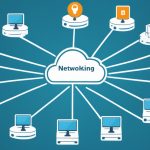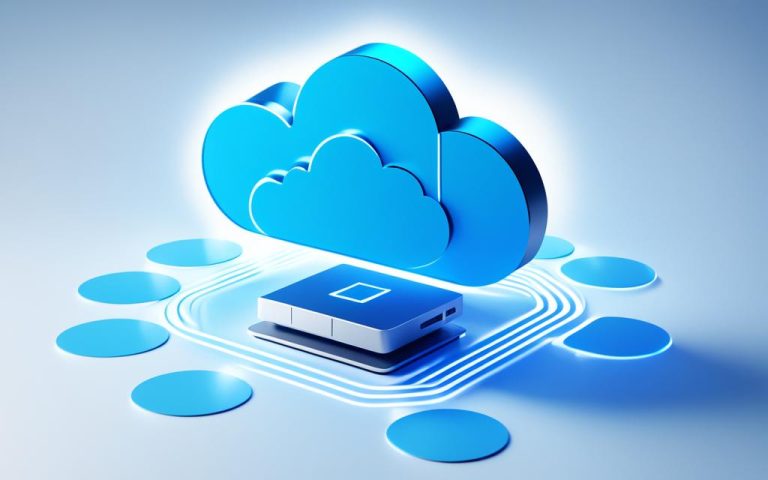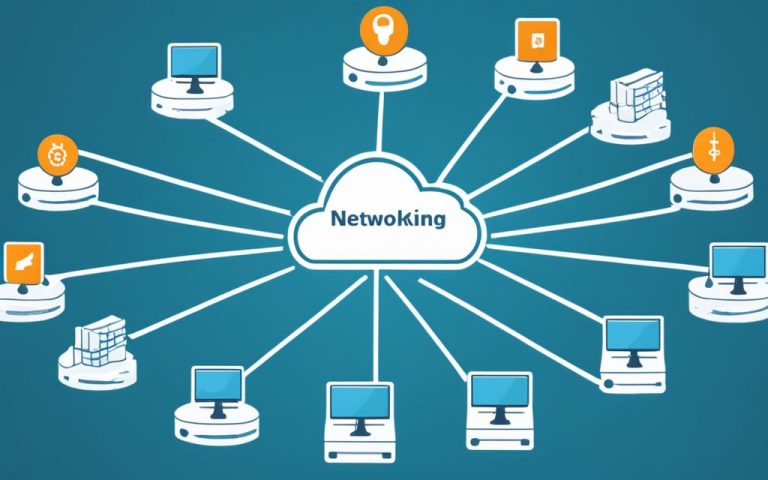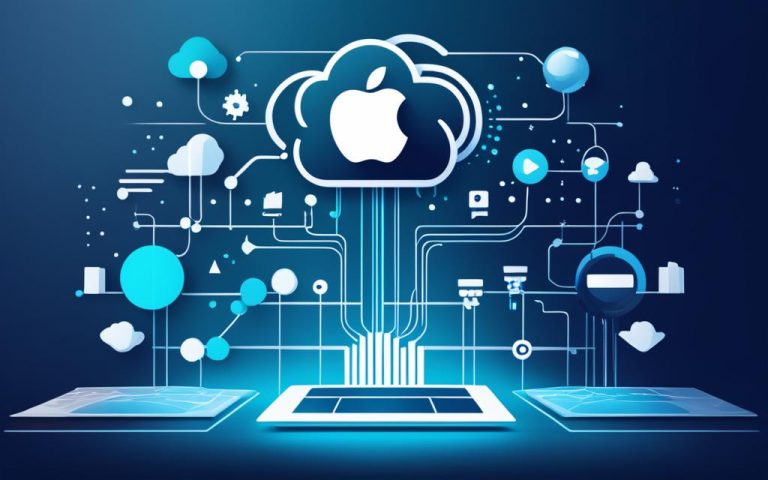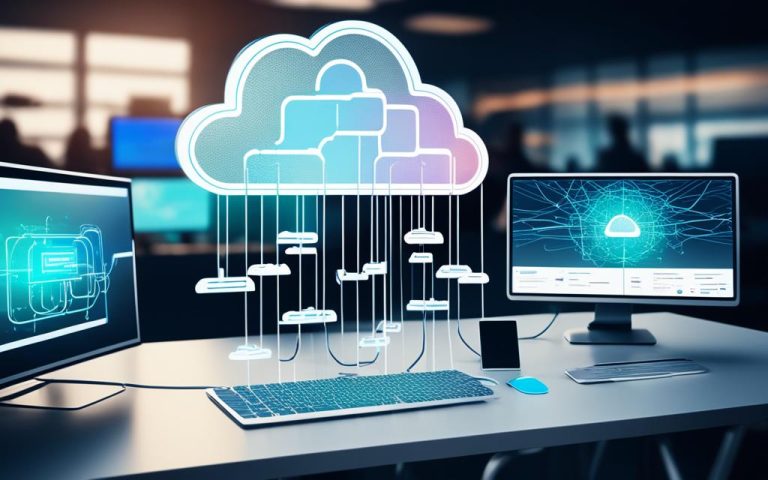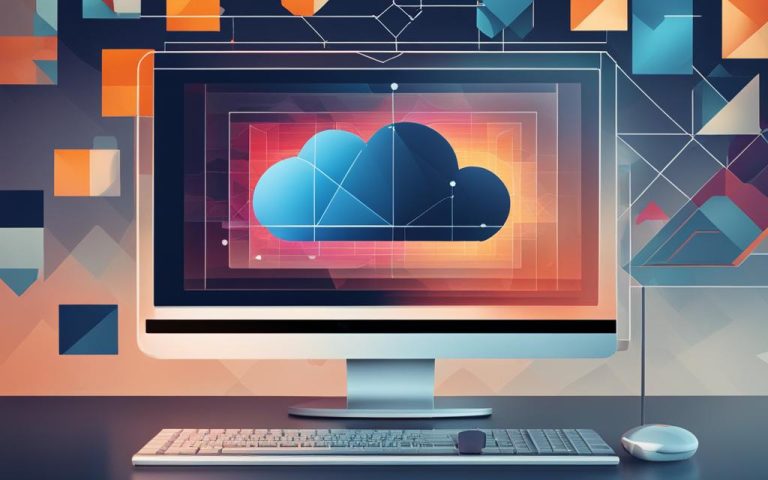The future of operating systems is undeniably intertwined with the advancements in cloud networking landscapes. The rapid growth of cloud computing has revolutionized the way operating systems function and interact with users, paving the way for exciting possibilities in the years to come.
As technology continues to evolve at an unprecedented rate, operating systems are embracing transformative shifts that will shape the future. From Artificial Intelligence (AI) integration to seamless cross-platform compatibility, enhanced security measures to Internet of Things (IoT) integration, and a cloud-centric approach, the future of operating systems looks promising and innovative.
In this article, we will explore the emerging trends and technologies that will redefine the way we interact with operating systems. Join us as we delve into the captivating realms of the future of operating systems.
The Rise of Artificial Intelligence Integration
As technology continues to advance, the integration of artificial intelligence (AI) into operating systems is set to play a pivotal role in shaping the future. AI-powered features are poised to revolutionize user experiences, automating tasks, and delivering personalized recommendations. Operating systems will harness the capabilities of AI to enable natural language processing, advanced voice recognition, and predictive analytics, enhancing the way users interact with their devices.
“Artificial intelligence integration in operating systems will propel us into a new era of seamless and intelligent computing.”
The potential of AI integration is multifaceted. By leveraging predictive analytics, operating systems can anticipate user needs, enabling them to provide proactive suggestions and streamline workflows. This level of intelligent automation facilitates a more efficient and tailored user experience.
Furthermore, AI-powered features bring forth enhanced voice recognition capabilities, allowing users to interact with their devices through intuitive voice commands. These advancements in natural language processing create a more intuitive, hands-free, and user-friendly interface.
AI integration in operating systems also opens up new horizons in data analysis and decision-making. By leveraging the power of machine learning algorithms, operating systems can analyze vast amounts of data in real-time, extracting valuable insights and empowering users with actionable information for informed decision-making.
As AI continues to evolve, its integration into operating systems will only grow more sophisticated and impactful. With the ability to understand and adapt to user preferences, operating systems can deliver increasingly personalized experiences, customized to individual needs and preferences.
With the rise of AI integration, operating systems are poised to become more than just tools; they will transform into intelligent companions that understand, assist, and anticipate user requirements.
Benefits of AI Integration in Operating Systems:
- Enhanced user experiences through personalized recommendations and proactive suggestions
- Improved voice recognition and natural language processing for more intuitive interactions
- Predictive analytics capabilities for real-time data analysis and informed decision-making
- Increased automation of tasks for improved efficiency and productivity
Future Outlook:
The future of operating systems lies in the seamless integration of artificial intelligence. AI-powered features will continue to evolve, enabling operating systems to provide even more sophisticated capabilities and adaptive experiences.
With AI integration, operating systems will be able to adapt to individual users, making everyday interactions more seamless, efficient, and personalized. As the technological landscape continues to evolve, the integration of AI in operating systems will undoubtedly shape the future of computing, bringing us closer to a world where intelligent machines are an integral part of our daily lives.
| AI Integration Benefits | Predictive Analytics | Voice Recognition |
|---|---|---|
| Enhanced user experiences | Automated data analysis | Intuitive voice commands |
| Personalized recommendations | Real-time insights | Natural language processing |
Seamless Cross-Platform Integration
In the future, operating systems will prioritize seamless integration across multiple devices and platforms, allowing users to switch between devices without losing productivity or data. This cross-platform integration will provide a unified experience, where workflows are synchronized, applications are shared, and data is seamlessly synchronized.
This cross-platform integration will revolutionize the way users interact with operating systems, offering a unified experience regardless of the device or platform they choose to use. Whether it’s transitioning from a desktop to a smartphone or switching between operating systems, users will have a consistent experience that enhances productivity and convenience.
“The ability to seamlessly switch between devices and platforms without any disruptions will redefine the way we work, communicate, and access information. It will unify our digital experiences and streamline our workflows, making technology an effortless tool that supports our daily activities.”
With synchronized workflows, users will be able to start a task on one device and seamlessly continue it on another, eliminating the need for manual transfers or duplicate efforts. Applications will be shared across devices, enabling users to access their favorite tools and software from anywhere. Data synchronization will ensure that files, documents, and settings are always up to date, regardless of the device being used.
This cross-platform integration will have profound implications for productivity, collaboration, and accessibility. It will empower individuals and organizations to work seamlessly across devices and platforms, breaking down barriers and enabling a truly unified experience.
To illustrate the importance of cross-platform integration, consider the following example:
| Device | Operating System | Workflow |
|---|---|---|
| Desktop | Windows | Create a presentation |
| Smartphone | iOS | Continue editing the presentation on the go |
| Tablet | Android | Present the finalized version to a client |
In this scenario, the user seamlessly switches between a desktop, smartphone, and tablet, utilizing different operating systems. With cross-platform integration, they can create a presentation on their Windows desktop, continue editing it on their iOS smartphone while on the go, and finally present the finalized version on an Android tablet. This unified experience eliminates the need for file transfers or compatibility issues, allowing the user to focus on their work instead of technology limitations.
Enhanced Security and Privacy Measures
In this rapidly evolving digital landscape, ensuring enhanced security and privacy measures within operating systems is of utmost importance. The future of operating systems will prioritize robust security features, advanced encryption algorithms, and privacy controls to protect users against cyber threats and maintain their confidentiality.
One of the key aspects of enhanced security is the implementation of advanced encryption algorithms. These algorithms will safeguard sensitive user data, ensuring that it remains secure and inaccessible to unauthorized individuals. By encrypting data both at rest and in transit, operating systems will offer an additional layer of protection against potential data breaches.
Furthermore, operating systems will incorporate biometric authentication as a means to strengthen security measures. Technologies such as fingerprint scanning, facial recognition, and iris scanning will provide users with secure access to their devices, reducing the reliance on traditional password-based authentication methods that are susceptible to hacking.
“By utilizing biometric authentication, operating systems will overcome the limitations of traditional passwords and provide users with a more secure and convenient way to access their devices.”
Privacy controls will also be enhanced to allow users greater control over their personal information. Operating systems will provide granular privacy settings that enable users to choose the level of data sharing and the specific applications that can access their information. This empowers users to dictate how their data is collected, used, and shared.
Operating systems will also offer built-in protection against malware, ransomware, and other cyber threats. With real-time threat detection mechanisms and proactive security updates, users can have peace of mind knowing that their devices and data are safeguarded against malicious attacks.

The integration of enhanced security and privacy measures ensures that users can confidently engage with their devices and the digital world without compromising their personal information or falling victim to cyber threats. These advancements in safeguarding user data will revolutionize the way we interact with technology, providing a secure and protected environment for users to utilize operating systems to their full potential.
Internet of Things (IoT) Integration
The future of operating systems holds exciting advancements in IoT integration, enabling seamless connectivity between devices and the digital world. Operating systems are poised to integrate effortlessly with IoT devices, empowering users with the ability to control and monitor smart appliances, connected vehicles, and intelligent infrastructure.
Through IoT integration, operating systems will provide a unified platform that facilitates efficient management and interaction with our interconnected world. Users will have the power to control and monitor various aspects of their daily lives, from adjusting smart thermostats and home security systems to tracking and managing the performance of their electric vehicles.
Imagine being able to check the contents of your refrigerator, adjust your home’s temperature, and receive real-time notifications on your smartphone while you’re away—all from the convenience of an integrated operating system. The possibilities for improving efficiency, convenience, and comfort are vast.
Control, Convenience, and Efficiency
IoT integration within operating systems extends beyond basic control and monitoring capabilities. It empowers users to create intelligent workflows, automate tasks, and enhance overall productivity. For example, imagine setting up a series of actions that trigger in sequence when you arrive home—your lights turn on, the temperature adjusts, and your favorite music starts playing, all without lifting a finger.
In the interconnected world enabled by IoT integration, operating systems bring convenience and efficiency to new heights, transforming the way we interact with the technology around us.
Operating systems with IoT integration also have the potential to revolutionize industries such as healthcare, manufacturing, and transportation. In healthcare, IoT devices can provide real-time monitoring of patients’ vital signs, alerting healthcare professionals to any abnormalities. In manufacturing, IoT integration allows for predictive maintenance, minimizing downtime and optimizing production. And in transportation, connected vehicles can provide valuable data for improving traffic management and reducing accidents.
An Image of the Interconnected World
To visualize the immense possibilities of IoT integration, take a look at the image below:
This image portrays a snapshot of an interconnected world, where devices, appliances, and infrastructure seamlessly communicate through IoT integration. From personalized health tracking devices to intelligent homes and smart cities, this interconnected ecosystem offers boundless opportunities for innovation and improved quality of life.
The Future Beckons
The integration of IoT devices into operating systems marks a pivotal advancement in technology, shaping the future of our digital landscapes. As IoT integration becomes increasingly sophisticated, operating systems will continue to establish themselves as the central hub for controlling and monitoring the interconnected world.
In the next section, we will explore how operating systems will embrace a cloud-centric approach, leveraging cloud infrastructure to enhance flexibility and access to files, applications, and settings.
Cloud-Centric Approach
As technology advances, operating systems are evolving to adopt a cloud-centric approach, embracing the power of cloud infrastructure for storage and computation. This shift towards cloud computing brings numerous benefits, including increased flexibility and seamless accessibility for users.
With a cloud-centric approach, users can enjoy flexible access to their files, applications, and settings from any device with an internet connection. No longer bound by the constraints of local storage, users can easily retrieve and collaborate on their work, regardless of their physical location or the device they are using.
This cloud-centric approach not only offers convenience but also ensures the security and backup of important data. Cloud infrastructure provides robust data encryption and protection against data loss, giving users peace of mind that their information is secure.
Furthermore, cloud computing enables efficient resource allocation, with the ability to scale computing power up or down to meet the demands of different tasks. This flexibility allows operating systems to optimize performance and deliver a smoother and more responsive user experience.
The impact of the cloud-centric approach extends beyond individual users. It also benefits organizations by enabling centralized data management, streamlined collaboration, and improved scalability. By leveraging the cloud infrastructure, businesses can achieve cost savings, enhanced productivity, and faster time-to-market for their products and services.
“The cloud-centric approach revolutionizes the way we interact with operating systems, providing unparalleled accessibility, security, and scalability,” says Jane Adams, a technology analyst at CloudTech Solutions.
“By leveraging cloud infrastructure, operating systems of the future empower users and organizations to thrive in an increasingly interconnected and fast-paced digital world.”
Benefits of a Cloud-Centric Approach:
- Flexible access to files, applications, and settings from any device
- Enhanced data security and backup capabilities
- Optimized performance and resource allocation
- Centralized data management and streamlined collaboration
- Cost savings and improved productivity for businesses
The Role of Cloud Infrastructure:
To better understand the importance of cloud infrastructure in the cloud-centric approach, let’s take a look at the following table:
| Traditional Approach | Cloud-Centric Approach |
|---|---|
| Dependent on local storage | Reliance on cloud infrastructure |
| Restricted access to files and applications | Flexible access from any device |
| Limited scalability and resource allocation | Efficient resource scaling and optimization |
| Higher risk of data loss and security breaches | Enhanced data security and backup capabilities |
Note: The above table showcases the contrasting features and benefits of the traditional approach versus the cloud-centric approach.
Conclusion
The future of operating systems holds tremendous potential for transformative shifts and innovative advancements. With the integration of artificial intelligence (AI), operating systems will become more intelligent and interactive, providing users with AI-powered features such as predictive analytics and advanced voice recognition. This will enhance user experiences and streamline daily tasks.
Cross-platform integration will play a vital role in the future of operating systems, allowing users to seamlessly switch between devices without any loss of productivity or data. The introduction of synchronized workflows and shared applications will enable a unified experience across multiple platforms.
In the future, operating systems will prioritize enhanced security and privacy measures to protect users against cyber threats. With advanced encryption algorithms, biometric authentication, and built-in protection against malware, users can have peace of mind knowing their data is secure.
Furthermore, the integration of operating systems with the Internet of Things (IoT) will provide users with control and monitoring capabilities over a wide range of connected devices. From managing smart appliances to controlling intelligent infrastructure, users will have a centralized platform for interacting with the interconnected world.
A cloud-centric approach will also shape the future of operating systems, leveraging the power of cloud infrastructure for flexible access to files, applications, and settings from any device. This shift towards cloud computing will redefine the way we store and access data, reducing reliance on local storage.
In summary, the future of operating systems is set to bring about transformative shifts and innovative advancements. AI integration, cross-platform compatibility, enhanced security measures, IoT integration, and a cloud-centric approach are the key trends shaping the operating systems of tomorrow. As technology continues to evolve, operating systems will continue to redefine how we interact with technology and unlock new possibilities for a more efficient and connected future.
FAQ
How are advancements in cloud networking landscapes influencing the future of operating systems?
The future of operating systems is heavily influenced by advancements in cloud networking landscapes. Cloud computing has reshaped the way operating systems function and interact with users, leading to transformative shifts in their design and capabilities.
What role does artificial intelligence (AI) play in the future of operating systems?
The integration of AI into operating systems is expected to increase in the future. AI-powered features will enhance user experiences, automate tasks, and provide personalized recommendations. Natural language processing, advanced voice recognition, and predictive analytics will be enabled by AI in operating systems.
How will future operating systems prioritize cross-platform integration?
Future operating systems will focus on seamless integration across multiple devices and platforms. Users will be able to switch between devices without losing productivity or data. Synchronized workflows, shared applications, and data synchronization will be key features of future operating systems.
What security and privacy measures can we expect in the future of operating systems?
The future of operating systems will prioritize robust security and privacy measures. Advanced encryption algorithms, biometric authentication, and enhanced privacy controls will be implemented. Operating systems will have built-in protection against malware, ransomware, and other cyber threats.
How will future operating systems integrate with IoT devices?
Operating systems in the future will integrate seamlessly with IoT devices. Users will be able to control and monitor smart appliances, connected vehicles, and intelligent infrastructure. Operating systems will provide a unified platform to manage and interact with the increasingly interconnected world.
What is the cloud-centric approach in future operating systems?
Future operating systems will adopt a cloud-centric approach, leveraging cloud infrastructure for storage and computation. Users will have flexible access to files, applications, and settings from any device. The shift towards cloud computing will reduce reliance on local storage and increase flexibility.
What can we expect in terms of transformative shifts and innovative advancements in future operating systems?
The future of operating systems is expected to bring innovative advancements and transformative shifts. AI integration, cross-platform compatibility, enhanced security measures, IoT integration, and cloud-centric approaches are key trends. These advancements will redefine the way we interact with technology and unlock new possibilities.





